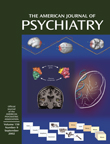Rhabdomyolysis With Simvastatin and Nefazodone
Mr. A, a 72-year-old Hispanic man with recurrent depression, anxiety, insulin-dependent diabetes mellitus, hypertension, and hyperlipidemia, was referred for severe depression and anxiety. His medications upon his visit to the psychiatrist were paroxetine, lorazepam, mirtazapine, risperidone, zolpidem, insulin, metformin, and simvastatin. Multiple previous antidepressant trials of sufficient dose and duration had failed to relieve his symptoms. His only significant laboratory test abnormality was a glucose level of 40 mg/dl; no subsequent glucose levels had been found to be lower than 74 mg/dl. The psychiatrist discontinued paroxetine, mirtazapine, lorazepam, and risperidone and initiated nefazodone, 100 mg b.i.d., clonazepam, and trazodone. Four weeks later, the nefazodone dose was increased to 300 mg at bedtime.Two weeks later, Mr. A was admitted to the medical service with a 3-day history of generalized weakness, a cough, a fever, and a provisional diagnosis of viral syndrome. After admission, the results of laboratory tests included a creatinine kinase level of 10,555 U/liter, an aspartate aminotransferase level of 72 U/liter, a lactose dehydrogenase level of 350 U/liter, and urine containing moderate blood, five to six red blood cells per high-power field, and one to two WBCs per high-power field. Mr. A’s blood urea nitrogen, creatinine, and alanine aminotransferase levels remained within normal limits; his serum myoglobin level was not tested. Nefazodone was discontinued, Mr. A was hydrated intravenously, and 2 days later he was discharged with a creatinine kinase level of 3869 U/liter. He was feeling less weak and afebrile. One week later, his weakness had nearly resolved (his creatinine kinase level was 261 U/liter). He has continued taking simvastatin and venlafaxine without complications.
References
Information & Authors
Information
Published In
History
Authors
Metrics & Citations
Metrics
Citations
Export Citations
If you have the appropriate software installed, you can download article citation data to the citation manager of your choice. Simply select your manager software from the list below and click Download.
For more information or tips please see 'Downloading to a citation manager' in the Help menu.
View Options
View options
PDF/EPUB
View PDF/EPUBGet Access
Login options
Already a subscriber? Access your subscription through your login credentials or your institution for full access to this article.
Personal login Institutional Login Open Athens loginNot a subscriber?
PsychiatryOnline subscription options offer access to the DSM-5-TR® library, books, journals, CME, and patient resources. This all-in-one virtual library provides psychiatrists and mental health professionals with key resources for diagnosis, treatment, research, and professional development.
Need more help? PsychiatryOnline Customer Service may be reached by emailing [email protected] or by calling 800-368-5777 (in the U.S.) or 703-907-7322 (outside the U.S.).

